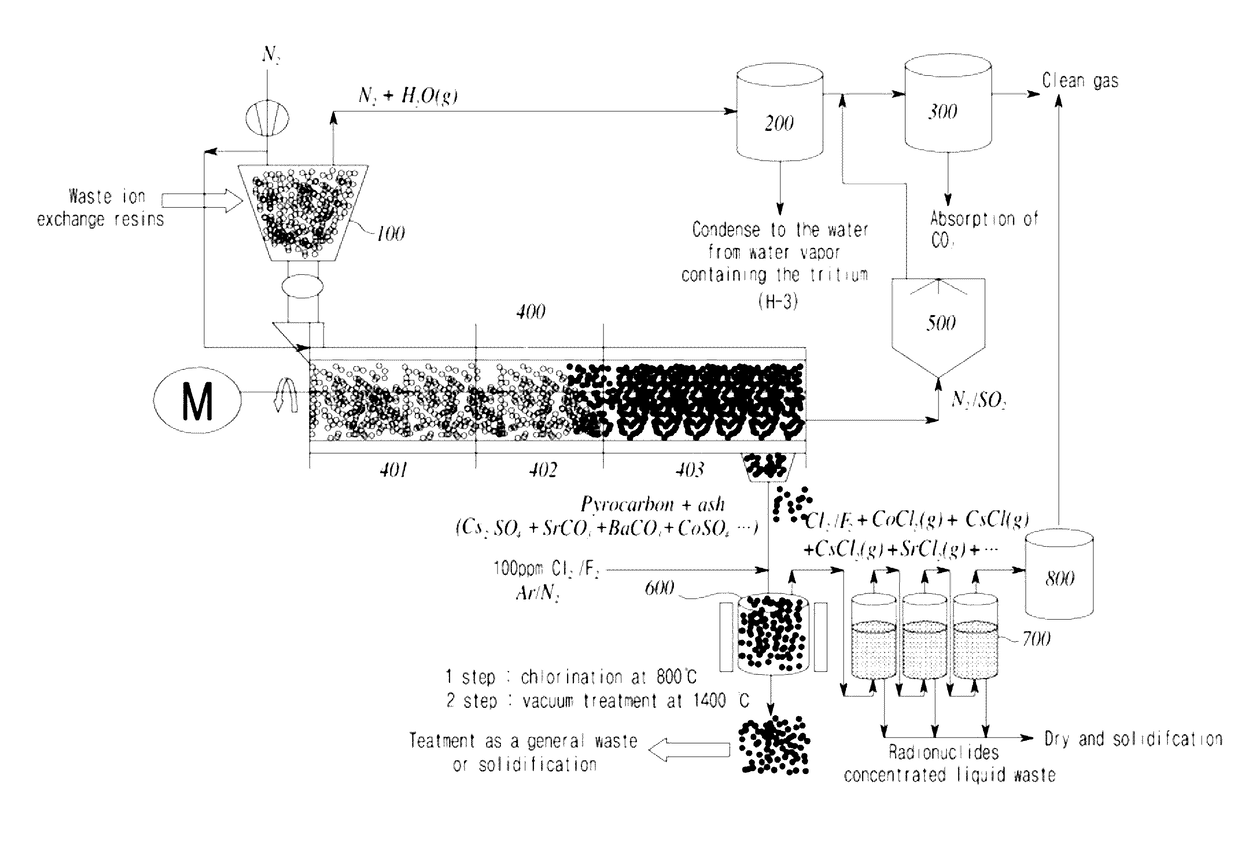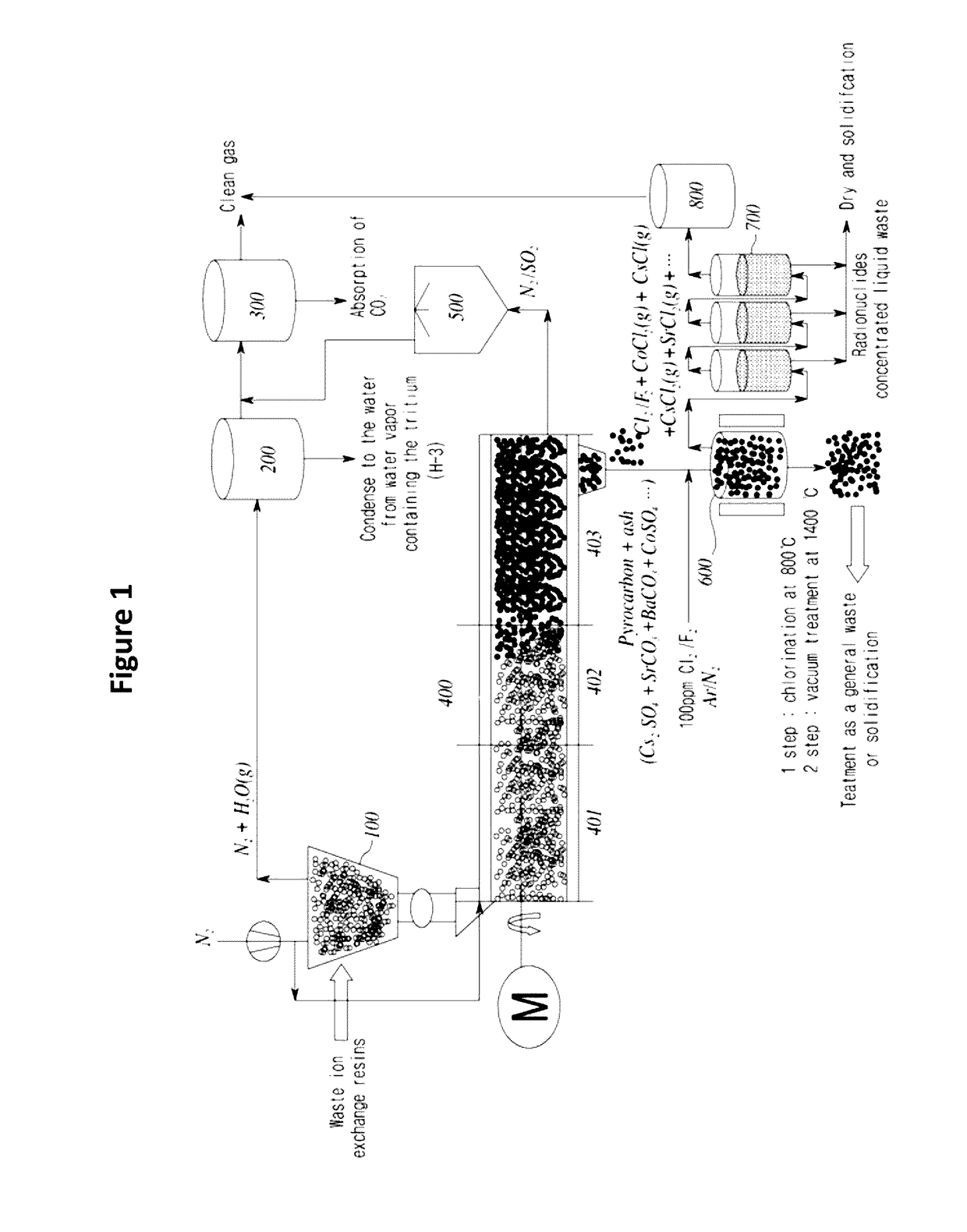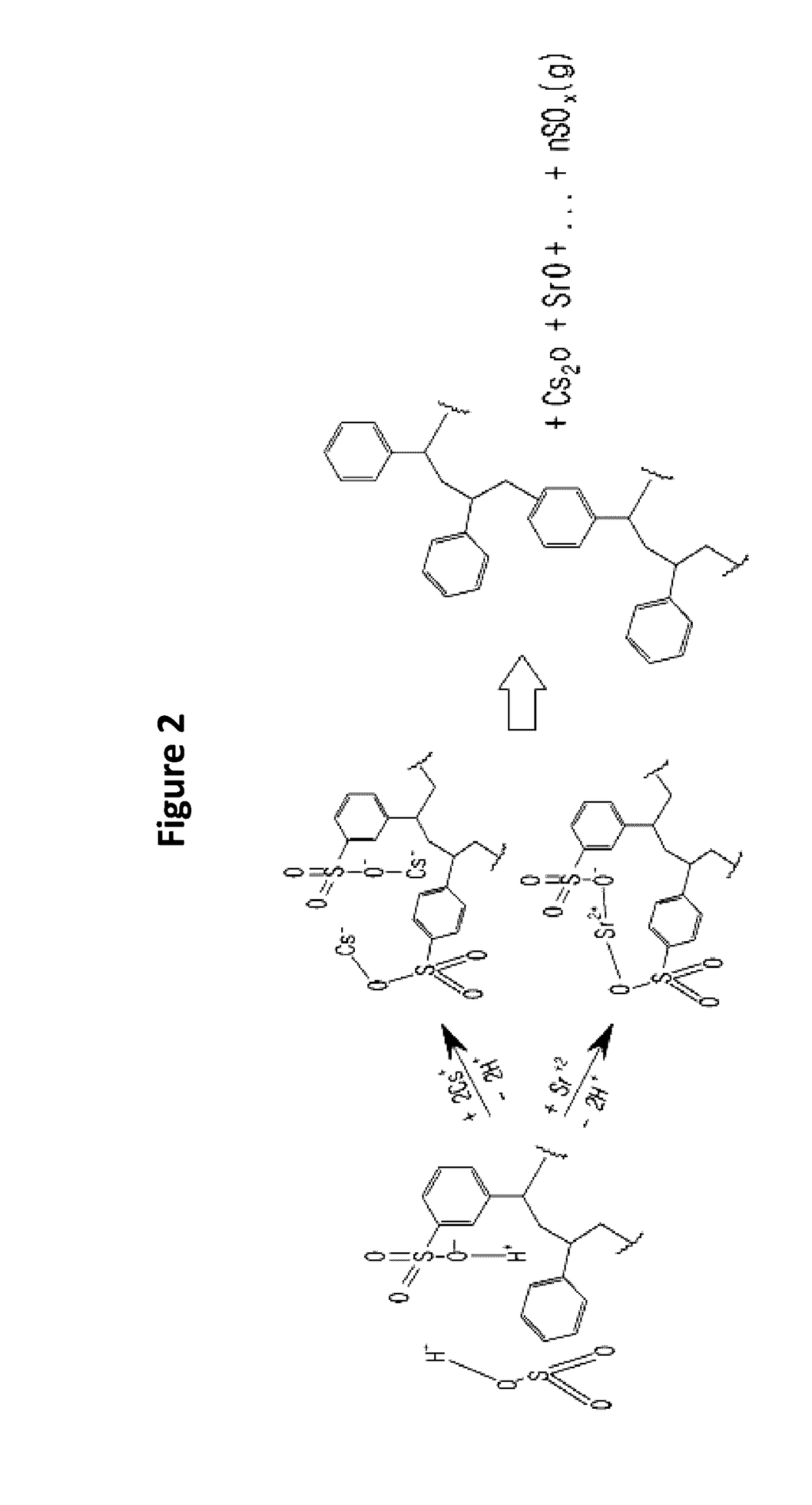Method for treatment of spent radioactive ion exchange resins, and the apparatus thereof
a technology of waste ion exchange resin and radionuclide, which is applied in the direction of radioactive contaminants, nuclear engineering problems, water treatment, etc., can solve the problems of increasing operation costs, difficult to separate and extract radionuclides attached to the resin, and continuous running of the evaporator, so as to achieve the effect of maximum volume reduction
- Summary
- Abstract
- Description
- Claims
- Application Information
AI Technical Summary
Benefits of technology
Problems solved by technology
Method used
Image
Examples
example 1
[0096]Step 1: The waste ion exchange resin wherein Cs radionuclide was substituted in the ion exchange resin containing sulfonic acid group(SO3H+) in styrenedivinylbenzene copolymer gas was used. The waste ion exchange resin was placed in the dryer(100) and dried at 150° C. for 2.5 hours.
[0097]Step 2: The waste ion exchange resin dried in step 1 was put in the ion exchanger separation region(401) of the screw conveyor reactor(400), which was heated at 350° C. The temperature at inlet was maintained at about 150° C. and the temperature of the high temperature region in this region was up to 400° C. The sulfur dioxide gas generated at this time was slowly discharged through the sulfur oxide conversion region.
[0098]Step 3: The reactants obtained in step 2 were heat-treated in the sulfur oxide conversion region(402) of the screw conveyor reactor(400) at about 550° C. for 30 minutes.
[0099]Step 4: The reactants obtained in step 3 were heat-treated in the carbide formation region(403) of t...
PUM
| Property | Measurement | Unit |
|---|---|---|
| temperature | aaaaa | aaaaa |
| temperature | aaaaa | aaaaa |
| temperature | aaaaa | aaaaa |
Abstract
Description
Claims
Application Information
 Login to View More
Login to View More - R&D
- Intellectual Property
- Life Sciences
- Materials
- Tech Scout
- Unparalleled Data Quality
- Higher Quality Content
- 60% Fewer Hallucinations
Browse by: Latest US Patents, China's latest patents, Technical Efficacy Thesaurus, Application Domain, Technology Topic, Popular Technical Reports.
© 2025 PatSnap. All rights reserved.Legal|Privacy policy|Modern Slavery Act Transparency Statement|Sitemap|About US| Contact US: help@patsnap.com



